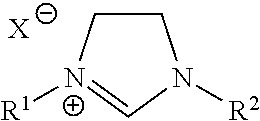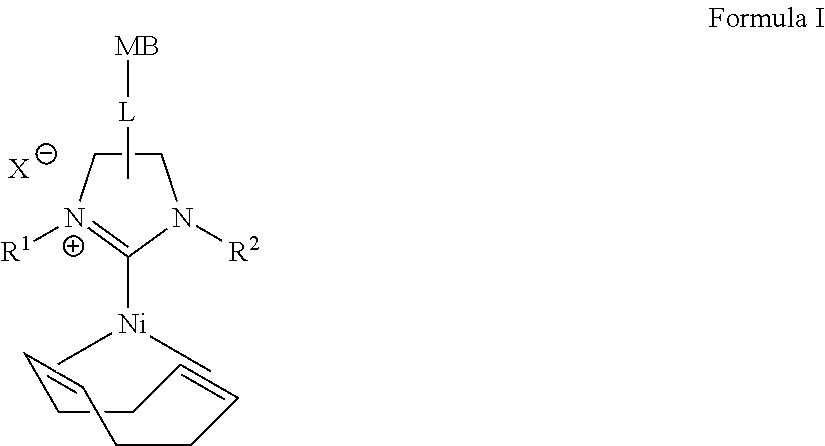Catalyst and method for fractionating lignocellulosic material
a technology of lignocellulosic material and catalyst, which is applied in the direction of physical/chemical process catalyst, lignin derivative, sustainable manufacturing/processing, etc., can solve the problems of high capital expenditure (capex) and operational expenditure, high cost of tools, and use of solid acid catalysts, etc., to reduce processing cost and time, convenient recovery and isolation, and high cost
- Summary
- Abstract
- Description
- Claims
- Application Information
AI Technical Summary
Benefits of technology
Problems solved by technology
Method used
Image
Examples
examples
[0131]Various embodiments of the present invention can be better understood by reference to the following Examples which are offered by way of illustration. The present invention is not limited to the Examples given herein.
Synthesis of Nickel Catalyst
[0132]The below synthetic steps can be used to provide a newly synthesized solid catalyst, according to some embodiments.
[0133]Step 1: An aromatic amine, where R=2,4,6-trimethylaniline or 2,6-diisopropylaniline, can be reacted with oxalic acid in a glyoxal linking reaction in methanol solvent for 6 h at 25° C. to form a diamine.
[0134]
[0135]Step 2: The diimine from Step 1 is contacted with hydrochloric acid to form a salt.
[0136]
[0137]Step 3: Forming the ring structure: Stirred and refluxed at 110° C. for 16 hours under an argon atmosphere.
[0138]
[0139]Step 4: The product is washed once with cold diethyl ether and once with cold ethyl acetate.
[0140]Step 5: The transition metal complex is synthesized by Ni(COD)2 with 2.5 equivalents of sodi...
PUM
| Property | Measurement | Unit |
|---|---|---|
| size | aaaaa | aaaaa |
| pressure | aaaaa | aaaaa |
| pressure | aaaaa | aaaaa |
Abstract
Description
Claims
Application Information
 Login to View More
Login to View More - R&D
- Intellectual Property
- Life Sciences
- Materials
- Tech Scout
- Unparalleled Data Quality
- Higher Quality Content
- 60% Fewer Hallucinations
Browse by: Latest US Patents, China's latest patents, Technical Efficacy Thesaurus, Application Domain, Technology Topic, Popular Technical Reports.
© 2025 PatSnap. All rights reserved.Legal|Privacy policy|Modern Slavery Act Transparency Statement|Sitemap|About US| Contact US: help@patsnap.com



